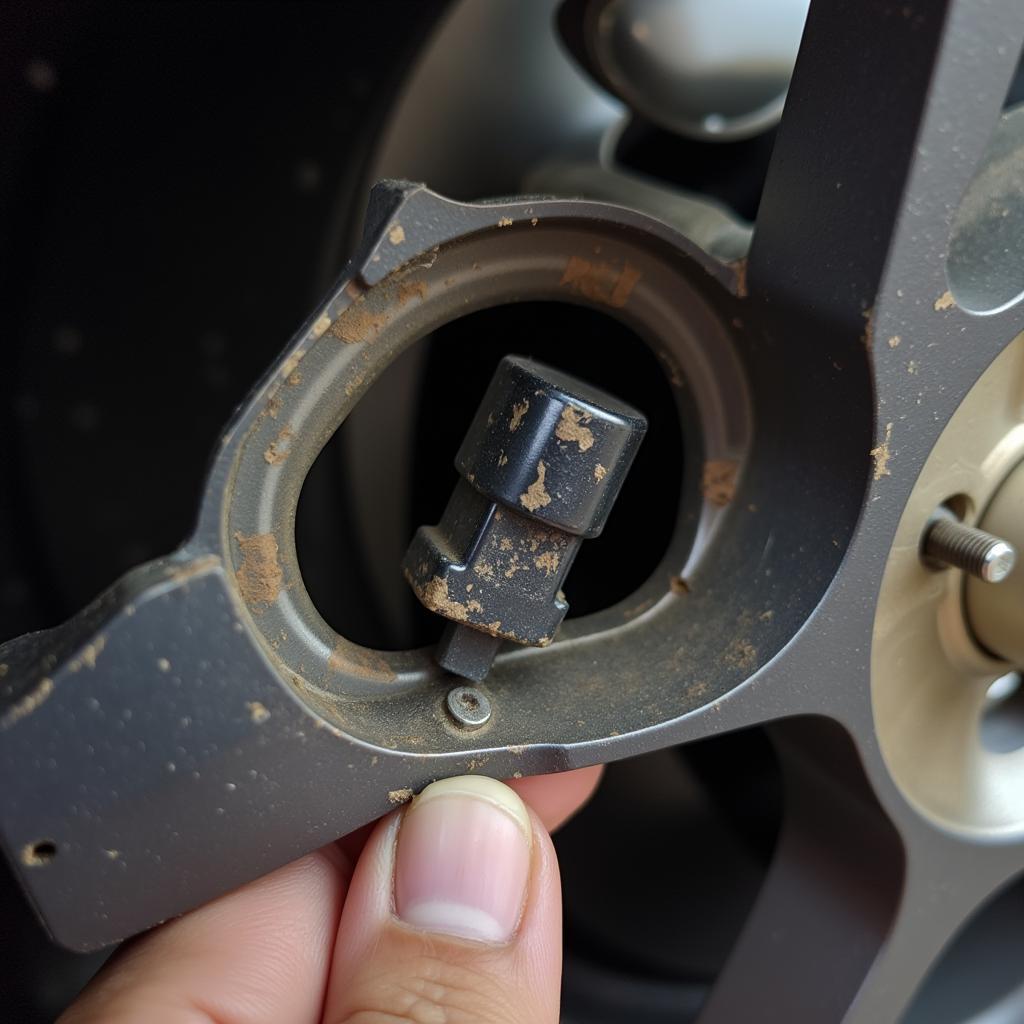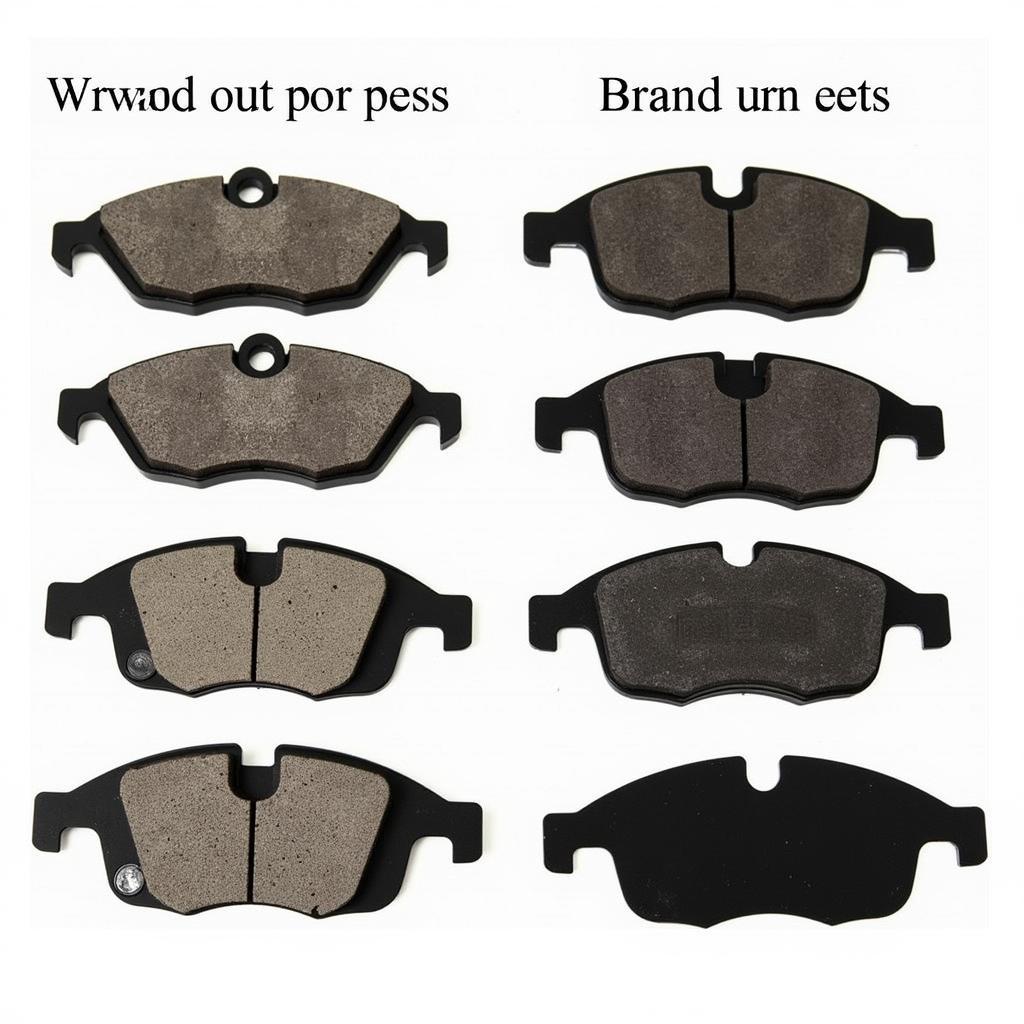The dreaded brake pad warning light on your Jaguar XF dashboard can be a nuisance. While it’s designed to keep you safe, knowing how to address the issue efficiently can save you time and potential headaches. This guide will provide you with all the information you need about the Jaguar XF brake pad warning light reset, from understanding its causes to step-by-step instructions on how to reset it yourself.
Understanding Your Jaguar XF’s Brake Pad Warning Light
The brake pad warning light is a crucial part of your car’s safety system. It illuminates when the brake pads wear down beyond a certain point, indicating that it’s time for a replacement. Ignoring this warning can lead to severe consequences, including compromised braking efficiency and potential damage to your brake rotors.
Common Causes of the Brake Pad Warning Light
While worn brake pads are the most common culprit, several other factors can trigger the brake pad warning light in your Jaguar XF:
- Worn Brake Pad Sensors: Your Jaguar XF is equipped with brake pad wear sensors that trigger the warning light when the pads wear down to a specific thickness.
- Faulty Brake Pad Sensors: Like any other electrical component, these sensors can malfunction, causing the light to illuminate even if the brake pads are in good condition.
- Low Brake Fluid Level: Brake fluid is vital for transmitting the force you apply to the brake pedal to the wheels. A leak in the system or low fluid levels can trigger the warning light.
- Issues with the Braking System: Problems within the braking system itself, such as a faulty ABS module, can also cause the warning light to come on.
 Jaguar XF Brake Pad Sensor
Jaguar XF Brake Pad Sensor
Troubleshooting the Brake Pad Warning Light
Before attempting a reset, it’s crucial to identify the root cause of the warning light:
- Inspect your brake pads: If you’re comfortable doing so, visually check your brake pads for wear. If they appear thin or you notice deep grooves, it’s time for a replacement.
- Check your brake fluid: Locate the brake fluid reservoir under the hood of your Jaguar XF. Ensure the fluid level is within the minimum and maximum markers.
- Consult a professional: If you’re unsure about any aspect of the inspection or suspect a more complex issue, it’s always best to consult a qualified mechanic or Jaguar dealership.
Resetting the Brake Pad Warning Light: A Step-by-Step Guide
If you’ve confirmed that your brake pads are new and the warning light persists due to a sensor reset requirement, you can attempt a manual reset. Here’s a general guide. However, keep in mind that procedures can vary slightly depending on the model year of your Jaguar XF:
Note: This guide is for informational purposes only. Proceed with caution, as incorrectly resetting the warning light without addressing the underlying issue can be dangerous.
- Safety First: Park your Jaguar XF on a level surface and engage the parking brake.
- Locate the OBD-II Port: This port is typically located under the dashboard on the driver’s side.
- Connect an OBD-II Scanner: Use an OBD-II scanner compatible with your Jaguar XF.
- Turn on the Ignition: Turn the ignition to the “on” position without starting the engine.
- Access the Brake Module: Navigate through the scanner’s menu to access the brake module.
- Select “Reset Brake Pad Warning Light”: The exact wording may vary depending on the scanner model.
- Follow the On-Screen Prompts: The scanner will guide you through the reset procedure.
- Confirm Reset: Once the process is complete, confirm that the warning light has been successfully reset.
 OBD-II Port Location in a Jaguar XF
OBD-II Port Location in a Jaguar XF
When to Seek Professional Help
While a DIY reset is possible, it’s essential to recognize when professional assistance is necessary:
- Persistent Warning Light: If the warning light returns immediately after a reset, it indicates a deeper underlying issue.
- Unfamiliar with OBD-II Scanners: If you’re not comfortable using an OBD-II scanner or unfamiliar with car diagnostics, it’s best to leave the task to a professional.
- Suspected System Malfunction: If you suspect a problem with the brake system beyond worn pads or a sensor reset, a professional diagnosis is crucial.
Jaguar XF Brake Pad Replacement Cost
The cost of brake pad replacement for a Jaguar XF can vary based on factors like location, labor rates, and the specific type of brake pads used. On average, you can expect to pay between $150 to $300 per axle for parts and labor.
 New Brake Pads for Jaguar XF
New Brake Pads for Jaguar XF
Tips for Prolonging Brake Pad Life
- Smooth Braking: Avoid harsh braking whenever possible. Gradual slowing down reduces wear and tear on your brake pads.
- Anticipate Stops: Pay attention to traffic flow and anticipate stops to minimize unnecessary braking.
- Lighten the Load: Carrying excessive weight in your Jaguar XF puts extra strain on the brakes, leading to faster wear.
- Regular Maintenance: Adhere to the manufacturer’s recommended maintenance schedule for your Jaguar XF, including regular brake inspections.
Conclusion
Addressing the brake pad warning light in your Jaguar XF is crucial for your safety and the longevity of your vehicle. By understanding its causes, troubleshooting steps, and reset procedures, you can approach the issue confidently. However, remember that professional assistance is always recommended for complex problems or if you’re unsure about any aspect of the process. Safe driving starts with a well-maintained braking system.
FAQs about Jaguar XF Brake Pad Warning Light Reset
1. Can I drive my Jaguar XF with the brake pad warning light on?
While it’s technically possible to drive a short distance with the warning light on, it’s strongly discouraged. Driving with worn brake pads compromises your safety and can damage other braking components.
2. How often should I replace my Jaguar XF’s brake pads?
Brake pad lifespan varies depending on driving habits and conditions. However, it’s generally recommended to have them inspected every 10,000 miles and replaced as needed.
3. Can I use any OBD-II scanner to reset the brake pad warning light?
Not all OBD-II scanners are created equal. It’s best to use a scanner specifically compatible with Jaguar vehicles to ensure proper communication and functionality.
4. What happens if I reset the light without replacing the pads?
Resetting the warning light without addressing the underlying issue, such as worn brake pads, will not solve the problem. The light will reappear, and you’ll be driving with compromised brakes.
5. Is it cheaper to replace brake pads myself?
While a DIY approach might seem cost-effective, remember that working on brakes requires a certain level of mechanical expertise. Improper installation can be dangerous. If you’re not comfortable, it’s best to leave it to the professionals.
6. How do I know if my brake fluid is leaking?
Look for signs like puddles of fluid under your car, a consistently low brake fluid level, or a soft or spongy brake pedal feel. If you notice any of these, consult a mechanic immediately.
7. Can I use aftermarket brake pads on my Jaguar XF?
While aftermarket brake pads are available and often more affordable, using OEM (Original Equipment Manufacturer) parts is generally recommended for optimal performance and compatibility.
